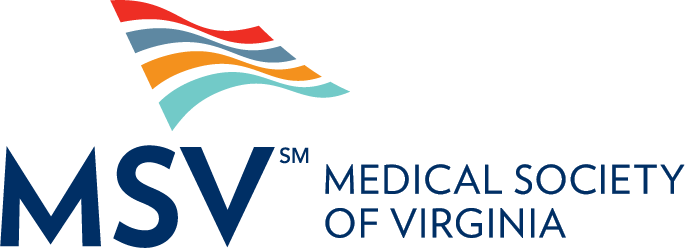5 Ways PCPs Can Support Patients with Substance Use Disorders
Substance Use Disorders (SUDs) are mental health conditions that revolve around misuse and dependency involving addictive substances, such as alcohol or illicit drugs. It's estimated that about 17% of Americans over age 12 experience an SUD each year. Even though an SUD diagnosis carries a significant risk of morbidity and mortality, only 12% of those with this condition receive treatment.
In primary care settings, there is a higher concentration of SUD cases – about 20-25% of patients, versus 17%. This is thought to be because SUDs are known to contribute to chronic health conditions, the symptoms of which bring many patients to their primary care providers (PCPs).
As a result, PCPs are in a unique position when it comes to caring for patients with SUDs. They are already accustomed to treating a variety of complex chronic conditions and establishing long-lasting relationships with their patients, and they're much easier for patients to access than a specialist. Patients also may not be willing to accept their SUD and seek treatment independently, but as we've noted, they may seek support from their PCP regarding symptoms that arise because of their SUD.
PCPs are already overwhelmed, with 58% reporting burnout. Understandably, it can feel intimidating to ask them to add SUD screenings and interventions to patient visits. However, research has shown that even brief interventions from a PCP can have long-lasting, positive impact on SUD behavior.
Below, we discuss 5 ways that PCPs can support patients with SUDs in primary care settings, based off the Screening, Brief Intervention & Referral to Treatment (SBIRT) model. This model is an evidence-based approach to identify SUDs and reduce excessive use of substances that works especially well in primary care settings.
5 Ways PCPs Can Support Patients with Substance Use Disorders
- Educate Yourself on SUDs
- Screen for SUDs During Annual + Problem Visits
- If Positive Screen -> Assess Level of Need
- Perform Appropriate Brief Intervention
- Refer to Specialist Care as Needed
1. Educate Yourself on SUDs
There are several ways to start educating yourself on SUDs and being prepared to identify them in your patients. Here are a few resources that can get you started!
HealthHaven Recovery offers low-cost CME trainings focused on topics in adult mental health and substance use conditions. These trainings are adapted to fit into your busy schedule, so you can continue to support patients in your day-to-day practice while elevating your approach. Check out our offerings here!
Buprenorphine is a medication that is used to treat opioid-use disorder. Only physicians with a Drug Enforcement Administration (DEA) registration can prescribe this medication, and there is a prescriber training available for those interested. You can learn more about the training requirements here!
This section is based off the SBIRT model, but it can be helpful to review the model on your own and take a look at the resources they offer. Click here to learn more about SBIRT and how you can apply it at your practice!
2. Screen for SUDs During Annual + Problem Visits
Both annual and problem visits are opportunities for SUD screenings. Here are some of the screening tools recommended for PCPs trying to screen for SUDs:
- CRAFFT: Screens for alcohol & drug use.
- DAST-10: Screens for drug use.
- AUDIT-C: Screens for alcohol use
If those aren’t what you’re looking for, check out this comprehensive list of SUD screening tools divided by population type.
3. If Positive Screen -> Assess Level of Risk
SBIRT defines four levels of “substance use risk zones”, or levels of risk. These are divided into the percentage of patients that fall into each category.
- 5% – High Risk Substance Use
- 10% – Harmful Substance Use
- 10% – Risky Substance Use
- 75% – Lower Substance Use
These levels of risk are scored using the CRAFFT, DAST, or AUDIT screenings linked above. Only 5% of those screened tend to be high risk and need specialized treatment. About 20% will be experiencing either harmful or risky substance use, which can be helped with a brief intervention – see below!
4. Perform Appropriate Brief Intervention (Risky or Harmful Substance Use)
For the 20% of patients with risky or harmful substance use levels, SBIRT recommends a brief intervention. We've adapted a handout that you can print for yourself or others at your practice that goes over how to perform a brief intervention, based on the one made by the University of Iowa. Click below to view the steps of a brief intervention and download the handout for yourself!
5. Refer to Treatment as Needed (High Risk Substance Use)
For the 5% of patients who need a referral to higher levels of care, you can utilize HealthHaven's Adult Psychiatric Access Line (APAL). We offer free expert consultation and care navigation for Virginia PCPs who care for adult patients with substance use concerns. Our care navigators collaborate directly with your patient to connect them with local resources in their area, and they follow up with your patient to help them navigate barriers.
We hope this article has helped you better understand how to support patients with substance use at your primary care practice. All the resources we’ve mentioned are listed below for easy access!
- SUD Education for PCPs
- SUD Screening Tools
- SBIRT SUD Risk Assessment
- Brief Interventions for SUDs
- Adult Psychiatric Access Line (APAL)





